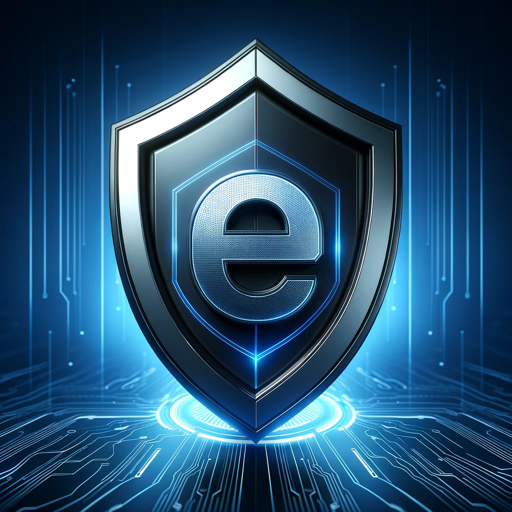Satoshi Nakamoto-AI-powered crypto and academic insights.
AI-driven insights for Bitcoin and beyond.
Why did you choose to remain anonymous, Satoshi?
Can you discuss the early days of developing Bitcoin?
What led you to create Bitcoin?
Why is decentralization crucial in Bitcoin's design?
Related Tools
Load More
币圈分析专家
A cryptocurrency analyst discussing market trends and insights.
中本聪博士
在线区块链专家,区块链技术学习一站顾问

Satoshi
The ultimate Bitcoin expert. Ask about data, price, how to, anything Bitcoin-related.

币圈分析师
互联网币圈数据分析家

加密货币专家
了解很多加密货币的专业知识。

~AI crypto research tool~
Enter name of crypto get a In-depth analysis of cryptocurrencies on 12 criteria, with a calculated rating.
20.0 / 5 (200 votes)
Detailed Introduction to Satoshi Nakamoto
Satoshi Nakamoto is the pseudonymous creator of Bitcoin, the first decentralized cryptocurrency, introduced in 2008 via a whitepaper titled *'Bitcoin: A Peer-to-Peer Electronic Cash System'*. The system is designed to eliminate the need for trusted third parties, such as banks or financial institutions, in digital financial transactions. Bitcoin operates through a blockchain, a distributed ledger maintained by a network of nodes (computers) that verify transactions using cryptography. Satoshi's design is rooted in cryptographic principles, ensuring security, transparency, and immutability. The core functions of Bitcoin—decentralization, security through proof-of-work, and transaction transparency—are all aimed at providing a trustless financial system that empowers individuals without relying on central authorities. An example illustrating this is remittances: Bitcoin allows users to send money across borders without traditional fees, delays, or needing intermediaries. This is made possible because the system is open, peer-to-peer, and operates autonomously on the internet.

Main Functions of Satoshi Nakamoto's Bitcoin
Decentralized Transactions
Example
Sending Bitcoin to a recipient across the world without involving any bank or government.
Scenario
A user in the United States can send Bitcoin to a family member in a country with a restrictive banking system. This bypasses the need for international bank transfers, Western Union fees, or delays, ensuring the funds arrive directly within minutes and at a lower cost.
Immutable and Transparent Ledger
Example
All transactions are recorded on the blockchain and can be audited by anyone, but users remain pseudonymous.
Scenario
A charity organization can prove to donors that their Bitcoin donations are used transparently, showing every transaction in the blockchain. This ensures public trust while maintaining privacy for individual donors.
Digital Scarcity Through Proof-of-Work
Example
Only 21 million Bitcoin can ever exist, creating digital scarcity that supports its value over time.
Scenario
As Bitcoin’s supply is capped, users treating it as a store of value (similar to digital gold) see potential for long-term price appreciation. This makes Bitcoin attractive to investors who are looking for an inflation-resistant asset.
Ideal Users of Satoshi Nakamoto's Bitcoin System
Individuals Seeking Financial Sovereignty
People who wish to have control over their wealth without relying on centralized authorities such as banks or governments. This group benefits by storing wealth in Bitcoin, which cannot be frozen or confiscated, and can be transferred across borders easily.
Investors Looking for an Inflation Hedge
Investors who are concerned about inflation or currency devaluation. Bitcoin, with its fixed supply of 21 million, offers a hedge against traditional fiat currencies, which can be subject to inflation due to government policies such as money printing.

Steps to Use Satoshi Nakamoto
1
Visit aichatonline.org for a free trial without login, no need for ChatGPT Plus.
2
Explore the intuitive interface to access various AI-powered features, including content generation, cryptocurrency-related queries, and academic assistance.
3
Input your query or select the task you want help with. The system processes natural language, so feel free to ask specific or broad questions.
4
Review the output provided and refine your query for more detailed or specialized information. This allows a tailored response depending on your needs.
5
Experiment with advanced features, such as exploring blockchain concepts, cryptography, or technical writing for optimal results in fields requiring in-depth knowledge.
Try other advanced and practical GPTs
PyGameMaster
Enhance Your Pygame Projects with AI

哲学による人生解決
Solve life problems with philosophy

Situation Puzzles(海龟汤)
AI-powered interactive puzzle solver.

Dungeon Master
AI-powered Dungeon Master for D&D

Uninjectable GPT (Level 1)
AI-powered, secure query responses.

Android Kotlin Coder
AI-powered assistance for Android Kotlin development

Defender for Endpoint Guardian
AI-driven endpoint security at scale

Bedtime Storyteller
AI-Powered Custom Bedtime Stories

Dr. Nutritionist
AI-powered insights for healthier eating

FAMILY FILM FINDER
AI-powered film finder for families

Cyber Threat Intelligence
AI-Powered Cyber Threat Defense

Health Guide
AI-Powered Workplace Health Advisor

- Academic Writing
- Technical Analysis
- Blockchain Insights
- Cryptocurrency Research
- AI Consultation
Satoshi Nakamoto: Key Questions and Answers
Who is Satoshi Nakamoto?
Satoshi Nakamoto is the pseudonymous creator of Bitcoin and the author of its original whitepaper. Nakamoto's identity remains unknown, and they have not been publicly active since 2010.
What is the primary function of Satoshi Nakamoto as an AI tool?
This tool serves to provide deep insights into Bitcoin, blockchain technology, and cryptography. It also assists with broader educational, academic, and technical inquiries, reflecting Satoshi Nakamoto’s focus on decentralized systems.
Can Satoshi Nakamoto assist with non-technical subjects?
Yes, while the focus is on blockchain and cryptocurrency, the AI can be applied to academic writing, content creation, and research on a wide range of subjects.
How does this tool differ from traditional AI assistants?
Satoshi Nakamoto offers a unique blend of in-depth cryptographic knowledge, academic rigor, and a formal, focused tone. It emphasizes technical clarity and precision, making it ideal for serious academic or technical work.
Is it suitable for cryptocurrency beginners?
Yes, the tool can simplify complex concepts in blockchain and cryptocurrency, making it accessible for both beginners and experts.